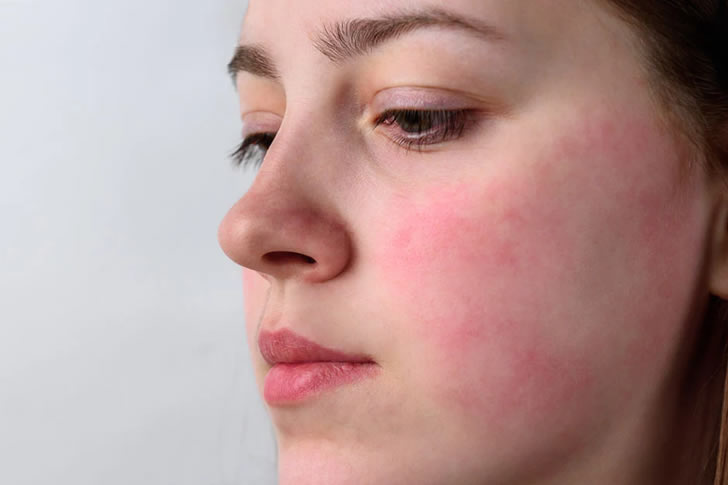Understanding the Signs of Plaque Psoriasis: A Comprehensive Guide
Plaque psoriasis is a chronic autoimmune condition characterized by raised, red, scaly patches on the skin. Early recognition of its signs can significantly aid in managing and treating the condition effectively.

What is Plaque Psoriasis?
Plaque psoriasis is the most common form of psoriasis, affecting millions globally. It is marked by thick, red patches of skin covered with silvery-white scales. These plaques can appear anywhere on the body but are commonly found on the elbows, knees, scalp, and lower back.
Signs and Symptoms of Plaque Psoriasis
Common Symptoms
- Red patches of skin covered with thick, silvery scales
- Dry, cracked skin that may bleed
- Itching, burning, or soreness
- Thickened or ridged nails
- Swollen and stiff joints
Detailed Symptoms
- Raised, Red Patches: These are often covered with silvery scales and can vary in size from small to large areas.
- Dry, Cracked Skin: Skin may crack and bleed, leading to discomfort and pain.
- Itching and Burning: These sensations can be intense and persistent, often disrupting daily activities.
- Nail Changes: Nails may become thickened, pitted, or ridged, and can even separate from the nail bed.
- Joint Pain: In some cases, plaque psoriasis is accompanied by psoriatic arthritis, causing swollen and stiff joints.
Bullet List of Key Signs
- Raised, red patches of skin
- Silvery scales covering the patches
- Dry and cracked skin that may bleed
- Itching and burning sensations
- Thickened or pitted nails
- Joint pain and stiffness
Causes and Triggers
Genetic Factors
Plaque psoriasis often runs in families, suggesting a genetic predisposition. Researchers have identified several genes linked to the condition, which can be triggered by environmental factors.
Environmental Triggers
- Stress: High stress levels can trigger or worsen psoriasis symptoms.
- Infections: Bacterial and viral infections, such as strep throat, can trigger flare-ups.
- Medications: Certain drugs, including lithium, antimalarials, and beta-blockers, can exacerbate symptoms.
- Lifestyle Factors: Smoking, heavy alcohol consumption, and obesity can increase the risk of developing psoriasis.
Bullet List of Common Triggers
- Stress
- Infections
- Medications
- Smoking
- Heavy alcohol consumption
- Obesity
Diagnosis and Treatment
Diagnosis
A dermatologist typically diagnoses plaque psoriasis through a physical examination and a review of the patient’s medical history. In some cases, a skin biopsy may be performed to confirm the diagnosis.
Treatment Options
- Topical Treatments: These include corticosteroids, vitamin D analogs, retinoids, and salicylic acid. They are applied directly to the affected skin.
- Phototherapy: This involves controlled exposure to ultraviolet light, which can reduce symptoms. Types of phototherapy include UVB and PUVA (psoralen combined with UVA).
- Systemic Medications: These are oral or injected medications that affect the entire body. Examples include methotrexate, cyclosporine, and biologics.
Question and Answer Section
Q: Can plaque psoriasis be cured?
A: There is currently no cure for plaque psoriasis, but various treatments can help manage the symptoms and improve quality of life.
Q: Is plaque psoriasis contagious?
A: No, plaque psoriasis is not contagious. It is an autoimmune condition and cannot be passed from person to person.
Q: How can I manage plaque psoriasis at home?
A: Moisturizing regularly, avoiding known triggers, maintaining a healthy lifestyle, and following a prescribed treatment plan can help manage symptoms.
Common Treatments for Plaque Psoriasis
| Treatment Type | Examples | Effectiveness |
|---|---|---|
| Topical Treatments | Corticosteroids, Vitamin D analogs, Retinoids | Moderate to high |
| Phototherapy | UVB, PUVA | High |
| Systemic Medications | Methotrexate, Cyclosporine, Biologics | High (but with potential side effects) |
Statistics on Plaque Psoriasis
Prevalence and Impact
- Global Prevalence: Approximately 2-3% of the global population is affected by psoriasis.
- Age of Onset: Plaque psoriasis can occur at any age but commonly appears between the ages of 15 and 35.
- Quality of Life: Psoriasis significantly impacts the quality of life, causing physical discomfort and emotional distress.
Bullet List of Key Statistics
- Affects 2-3% of the global population
- Commonly appears between ages 15 and 35
- Significantly impacts quality of life
Expert Insights
Insights from Dermatologists
Dermatologists emphasize the importance of early diagnosis and personalized treatment plans. Regular check-ups and adherence to prescribed treatments can significantly improve outcomes.
Patient Experiences
Many patients report that managing stress and avoiding known triggers can greatly reduce flare-ups. Support groups and counseling can also provide emotional support and coping strategies.
Bullet List: Tips for Managing Plaque Psoriasis
- Use gentle, fragrance-free skin care products
- Keep your skin moisturized
- Avoid scratching or picking at plaques
- Manage stress through relaxation techniques and exercise
- Follow a healthy diet and maintain a healthy weight
- Avoid smoking and limit alcohol consumption
Conclusion
Understanding the signs of plaque psoriasis and recognizing the triggers and treatments can help manage the condition effectively. While there is no cure, various treatments and lifestyle adjustments can significantly improve the quality of life for those affected.
References







Recent Comments